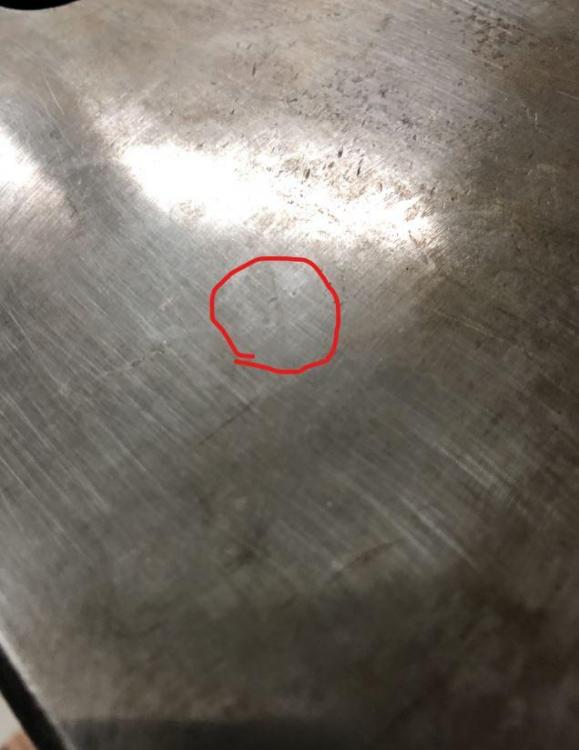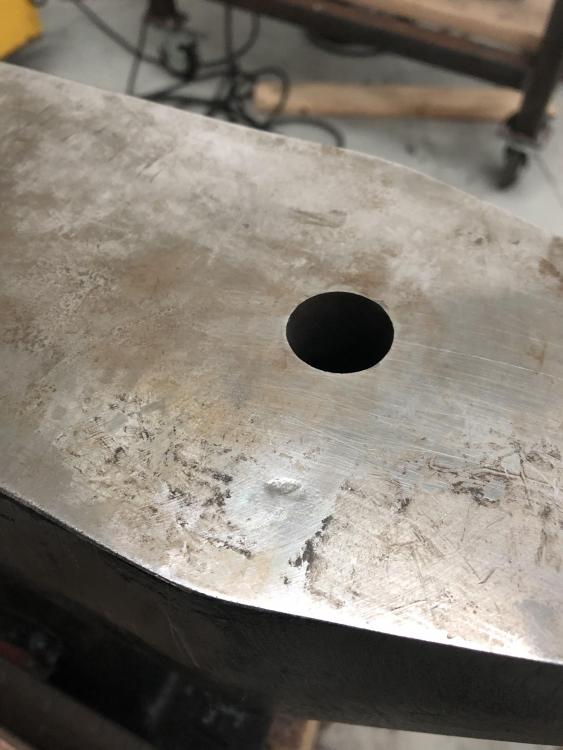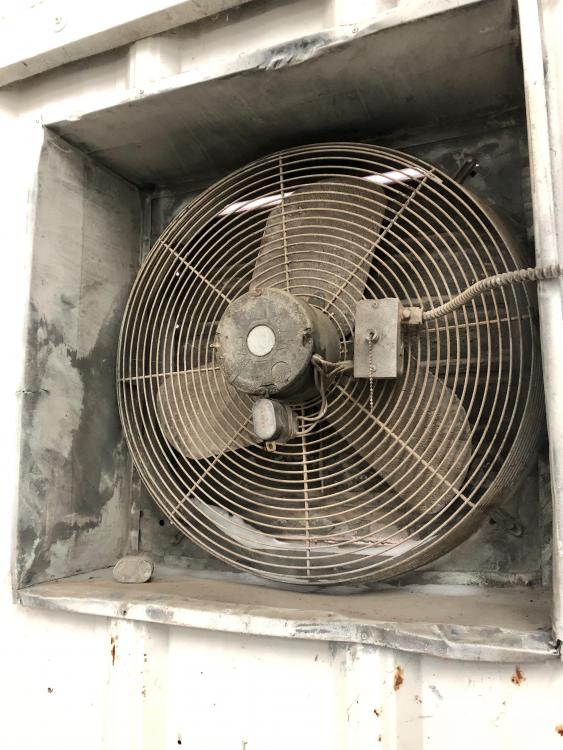
zip
Members-
Posts
27 -
Joined
-
Last visited
Content Type
Profiles
Forums
Articles
Gallery
Downloads
Events
Everything posted by zip
-
He is downsizing. From the last time I was there it sounded like the shop was done sometime in August, and the auction for his equipment would start in September. I also got the impression that if you wanted something before the auction you could make them an offer.
-
What did you do in the shop today?
zip replied to Mark Ling's topic in Blacksmithing, General Discussion
It’s hard to tell from the pictures, but did you round the bottom edges of the hammer eye where the handle passes through? It looks sharp on my screen. By how it’s breaking at the head it seems like a sharp edge that is stressing the handle. -
Manifold those burners together with black iron pipe, and extend out away from the heated area with it. Then you can convert to hose in a safer area that won't get damaged. I can't imagine it would be more than $30.
-
What do you use the foil for? You’ve got my curiosity piqued.
-
Found exactly what I’m trying to accomplish, round hot collar. Thanks for the suggestion!
-
I’m working on a project where I need a 2” section of a 1” diameter the bar to be 1-1/2” diameter. I don’t have any larger stock than the 1” diameter bar, and I tried upsetting a section and it was very slow going. An alternative I came up with is to use small 2” long piece of heavy wall tubing and forge weld that to the diameter of the 1” bar. I’d prefer it forge welded if it’s practical, it would be a good learning experience and the weld higher strength. Any specific approach in making the weld? Or is it simply flux the bar, slide the tubing section on, and forge the diameter in one direction working my way around to the starting point?
-
Sounds like the replacement anvil is coming faster than expected?
-
Good news. Are they handling the return shipping or do you own that?
-
I found a 45 Rc file I had tucked away and tried it on the same area you did in your video. It’s definitely below 45. I’ve had mine for 2 months. I’m sure it’s far too late at this point, and they’ll claim I got it too hot and it lost its temper. And seeing how I did bounce a ball bearing on it, technically the warranty is void. Though they didn’t have that disclaimer when I bought it. I was thinking a drop forged anvil would have been better than the cast, as I was considering a Holland anvil or old world anvil at the same time. Seems like quality of the heat treat is almost as important as the material itself. Kind of hard to judge the HT over the internet. Live and learn. I hope they make it right for you. It might be a bad batch of anvils, but it goes to show their QC is clearly not what it should be.
-
Slug: Are you working through centaur or directly Kanca? I’ll likely pick up a set of files and follow suit.
-
I'm interested to see what they do for you, because I'm certain my anvil would show similar results. I also agree that I think they would sell really well if the hardness was consistent. It's really disappointing because there were good older used anvils at the same price.
-
So, I'm going to jump in on this conversation. I have a 165 lb Kanca as well, and have felt the face is pretty soft. I wasn't sure though as I'm a newbie and didn't know what to expect for anvil hardness. Just this past week I had a chance to try out another anvil, older peter wright I believe, and missed a blow on it. Didn't do anything to the anvil. I've missed a blow on my 165 lb Kanca (ordered from Centaur Forge), and it put a deep ding in it. This was with a 2 lb cross pien which is pretty soft to begin with (able to file fairly easily), and I was by no means swinging for the fences. Attached is a picture. Also, I did the ball bearing test when I first got the anvil, and have indents similar to the thread mentioned previously. I dropped a 1" ball bearing from 5" from the face. It's tough to get the pictures up close with my phone, but I think you get the point. So, it seems as there is more than one lemon floating around. I agree on this as well. If my anvil only dented that much with a full miss I'd consider that acceptable.
-
Thanks Glenn, makes sense. For a heading tool, is there any type of standard for the length of nail vs shank size? I thought I had remembered reading somewhere how wrought nail sizes were standardized.
-
If I were to consider cut nails, how would you go about forging those? Would I draw the taper and then flatten one side a bit more as the last step, rendering a rectangular shape?
-
Thanks for the explanation Frosty. I agree Glenn, it would be a good idea to add the barbs.
-
The workbench is soft pine. I haven’t ran across any nail sizing in all of the old blacksmithing books I’ve downloaded. While we’re on this topic, is a smaller shank / thinner nail preferred for harder woods? My guess would be that the nails in softer woods would pull through easier, so a larger shank / thicker nail is used. Vice versa for hardwoods.
-
I’d like to make 16d (3-1/2” length) nails for a workbench project of mine. I like the aesthetics and the idea of better holding power that forged nails can offer. Plus, let’s face it, my tapers and hammer control could use the practice. The question: what size nail header should I use for these length of nails? I’ve looked up an ordinary nail size chart for wire nails, and the shank size for 16d is around 3/16”. I drew out a 3-1/2” long nail with that shank size and it seems too thin.
-
Coal forge in a shed, in a hanger.
zip replied to Drunken Dwarf's topic in Chimneys, Hoods, and Stacks
I had a similar situation, not being able to go through the roof line. I use a squirrel cage blower, which has the motor out of the airstream and a metal blower wheel. This fan is high static pressure (2 in wg) rated at 450 CFM. My duct run is roughly 20 feet total of 8” round. I calculated the area of the opening of my half hood and designed the draw for 100 feet per minute, which is a standard capture velocity for industrial hoods. In your case, being limited to 12VDC, you may be able use a bilge blower to get a similar cfm rating at decent static pressure. The problem with most bilge blowers is that the fan blade and motor is inline, and the fan blade is plastic. They are also really loud and have a terrible whine. You could try using a tube axial fan, but the minimum size for these type of fans is 12”. They are expensive as well. So in short, look for a high static pressure / flow fan with motor out of the air stream, and a fan blade that is metallic. You can use 8” duct if you have a fan with similar specs to what I listed above. And please don’t use flex duct, that stuff is garbage for any length of ductwork. -
That’s a sweet anvil, picked one up myself as well not too long ago (75kg). I’ll be interested to see what you think of it.
-
I’m shocked, I’ve never seen anyone looking through the drops there. How’s their selection looking lately? Last time I went (few months ago) it was all big structural steel.
-
I’m guessing Aztec steel?
-
I agree with review of the applicable codes, which I have been working through in parallel with this discussion. I thought the best route, before contacting the fire chief, was to educate myself prior to talking the application over with him so that I give the best solution for this situation. I think the alternate design, with the flue at or extending past the face of the building meets NFPA low-heat application. Single wall, non-galvanized pipe would be suitable. Obviously the preference would be extending the flue beyond the building, and I think this could be done without too much hassle. As far as clearance for air intakes, pedestrians, and nearby windows is no issue. The issue gets a little muddy whether a class A chimney is required. If that were the case, a double-walled pipe and termination above the roof line would be required. But, because this isn't a device used as a primary heating source, I'm not sure where that falls exactly. The local codes, of course, mention to refer to the manufacturer's instructions, which there are none. I've considered a propane forge, and would use an extraction hood with it for the CO (along with a monitor), but the issue of storing and using a propane cylinder indoors comes up. OSHA allows storage indoors, but use is another issue. Storing a tank outside and piping through the wall is not possible, either. And, I don't like the idea of a bomb in the same area while forging. Having a concrete-encased acetylene tank is a different story.
-
You're correct, the duct was planned to terminate right at the face of the exhaust fan. I don't really have the option to create another penetration through the wall or roof. I've attached a picture showing the wall exhauster. As I do not use the wall exhauster for any other activities in my shop, I have an alternative idea: Not using or completely removing the wall exhauster, and propping open the louvers permanently. The current fan cavity could be capped off and sealed, and the flue could pass through the cap and terminate in the fan cavity. I'd put a draft inducer in-line rated for use with coal stoves, and have it vent through through the sealed wall exhauster opening. So essentially this would be a sidewall / direct vent chimney which I believe there is no issue with this configuration from a building code / safety standpoint. I've attached another quick sketch, this time showing the view from the side. I should also mention there are no doors or windows of any kind of the side of the building where this would vent. It appears that sidewall / direct venting is up to code here as well. Thanks guys!
-
Makes sense guys, thanks for the info!
-
I have not actually set up the hood for the forge yet, I wanted to get some input before I start fabricating the super sucker. My concern is that the wall exhaust fan may cause some of the smoke from the forge to bypass the super sucker, which may allow some soot, etc. to end up on equipment in other parts of my shop. I don't have any issues with the exhauster drawing in room air along with the forge smoke, so long as it doesn't create an issue with the super sucker being bypassed at the forge. The exhauster is used to ventilate the building for other activities in the shop such as welding, or when I use one of the heat treat furnaces. I'm confused on why the wind would be of concern inside the building? Maybe I'm missing something. The view of the drawing is looking at the back wall from the inside of my shop. Thanks for talking this through with me.


